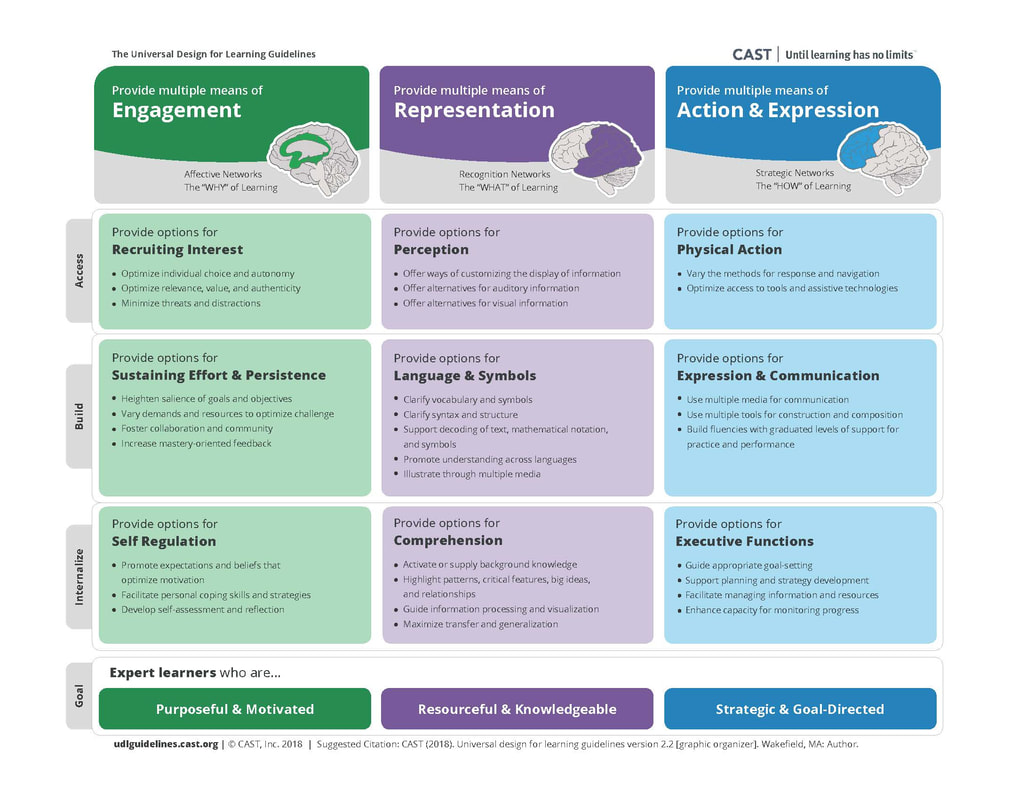Module 1 Book: Formatting Course Content so it's Accessible
Topic 1 – What is Accessibility and Why Does it Matter?
Post-secondary institutions serve an increasingly diverse student population. Designing for accessibility refers to designing course materials in a way that is usable and understandable by all students, regardless of their abilities, cultural and linguistic backgrounds, or learning preferences. Learners will vary in:
-
Information processing
-
Language processing
-
Introversion and extroversion
-
Financial resources
-
Post-secondary readiness
-
Self-advocacy
-
Spatial ability
-
Reading speed
-
Mathematical calculations
(Takacs & Zhang, 2020, p. 17)
Designing for accessibility should be learner-centered. When we refer to accessibility we are referring to an inclusive practice of removing barriers that would prevent learners from interpreting your course materials and engaging with the learning experience. When planning how you will present your course content, start with your students in mind. Think of the “prototypical student” you would expect to encounter in one of your courses. Now think of students who don’t fit this prototype and the barriers they might encounter. How can you design your curriculum to anticipate barriers and “teach to the margins” to be as inclusive as possible?
Removing barriers to learning ensures that all students have equal access to educational opportunities and can fully participate in the learning experience, creating a more equitable and inclusive learning environment. This approach benefits all students, not just those with specific needs or disabilities, as it helps them engage and navigate with course content more effectively. Acting proactively to anticipate and address barriers by incorporating accessibility principles in the design phase can be time consuming up front but will save you time later by not needing to be as reactive to accommodation requests.
Looking Ahead
In Module 5 Book: Support Services Across Campus, we will look at various student supports and why integrating information about those services is an important practice.
Universal Design for Learning (UDL) serves as a useful framework for this approach, particularly the principle of multiple means of representation. UDL is an educational framework that guides the design and delivery of inclusive and accessible learning experiences that meet the needs of all learners. The principles of UDL focus on providing multiple means of representation, expression, and engagement to accommodate the needs of diverse learners of varying abilities.

CAST. The UDL Guidelines. Retrieved from https://udlguidelines.cast.org/
UDL rejects a one-size-fits-all approach to teaching and learning, and instead emphasizes an approach to granting flexibility, choice, and access to all students (Pilgrim & Ward, 2017). It aims to meet the needs of diverse learners by designing the curriculum to adapt to the learner rather than forcing the learner to adapt to the curriculum. By designing accessible course materials with UDL principles in mind, educators can create learning experiences that are accessible, engaging, and effective for all students, regardless of their individual needs.
A deep dive into UDL is not within the scope of this course. You are encouraged to refer to the CAST UDL Guidelines for a more in-depth examination of the UDL framework.
Reflect
Before proceeding further, we invite you to consider the following three student personas.
Student 1
Levi is a third-year history student who lives on the fringe of the city limits. Her internet connection is not always reliable and has limited bandwidth that she must share with her two roommates. Levi uses public transportation and enjoys listening to podcasts on her commute to and from class.
Student 2
Amir is an international student in his first year of the Bachelor of Business Administration program. He is an English language learner, and although fluent, he sometimes struggles keeping up with lectures or other auditory components, especially if the presenter speaks quickly or uses frequent colloquialisms or slang. Amir is more comfortable digesting textual and visual content and is quite technology proficient.
Student 3
Charlotte is a second-year biology student who was born blind. She is comfortable using assistive technologies but becomes easily frustrated when images and charts are not recognized by her screen reader. She finds it disheartening to contact her instructors and the TRU accessibility office to request accommodation so frequently.
Instructions:
Reflect on how you have delivered course content in one or more of your courses recently. For example, this could include content uploaded in Moodle, on the web, through PowerPoint presentations, or other documentation. What kinds of barriers might each of these students face in accessing the content? Can you think of any ways that you could revise your content to be more accessible and inclusive for these students, while also being more engaging for all your students?
